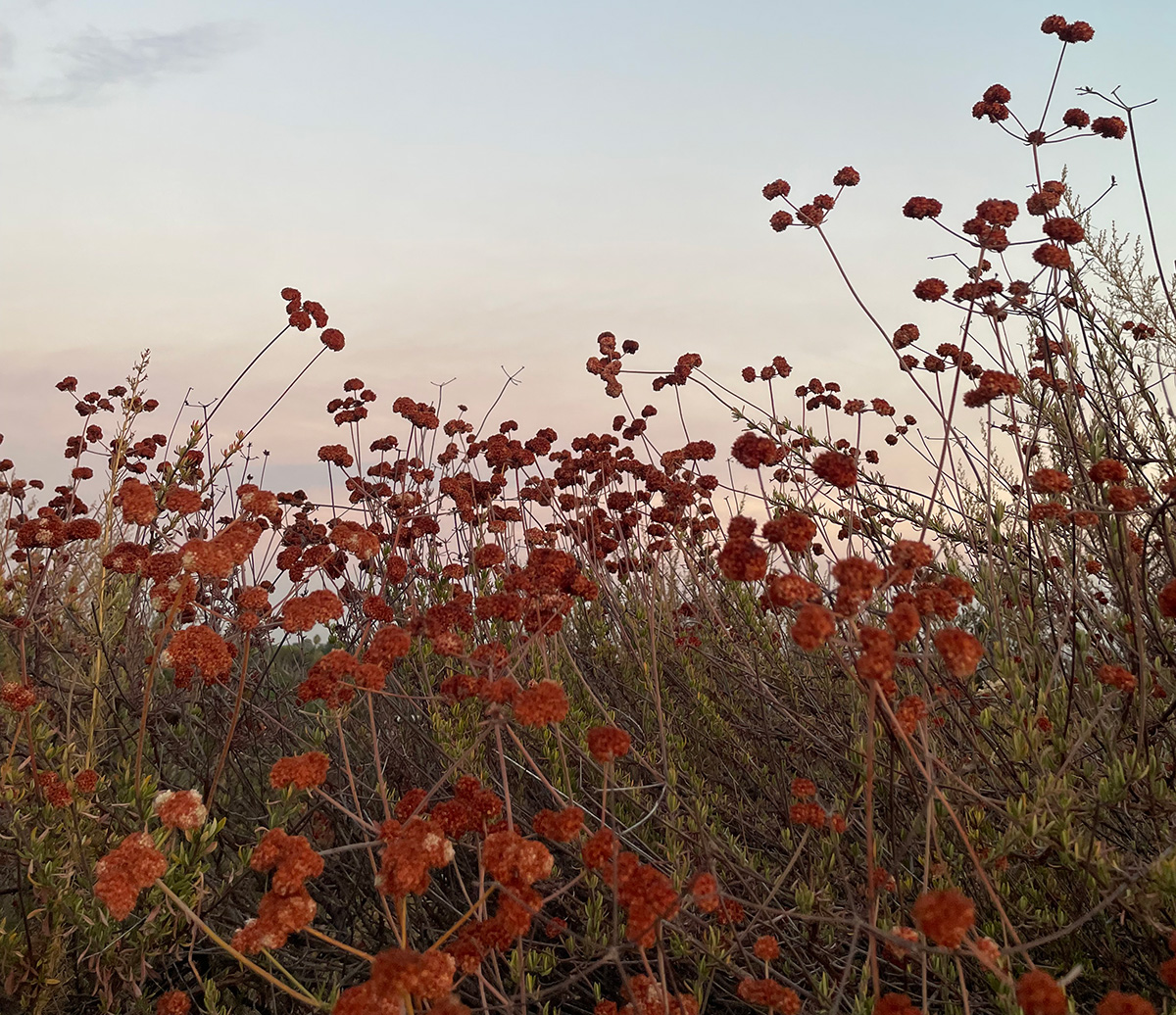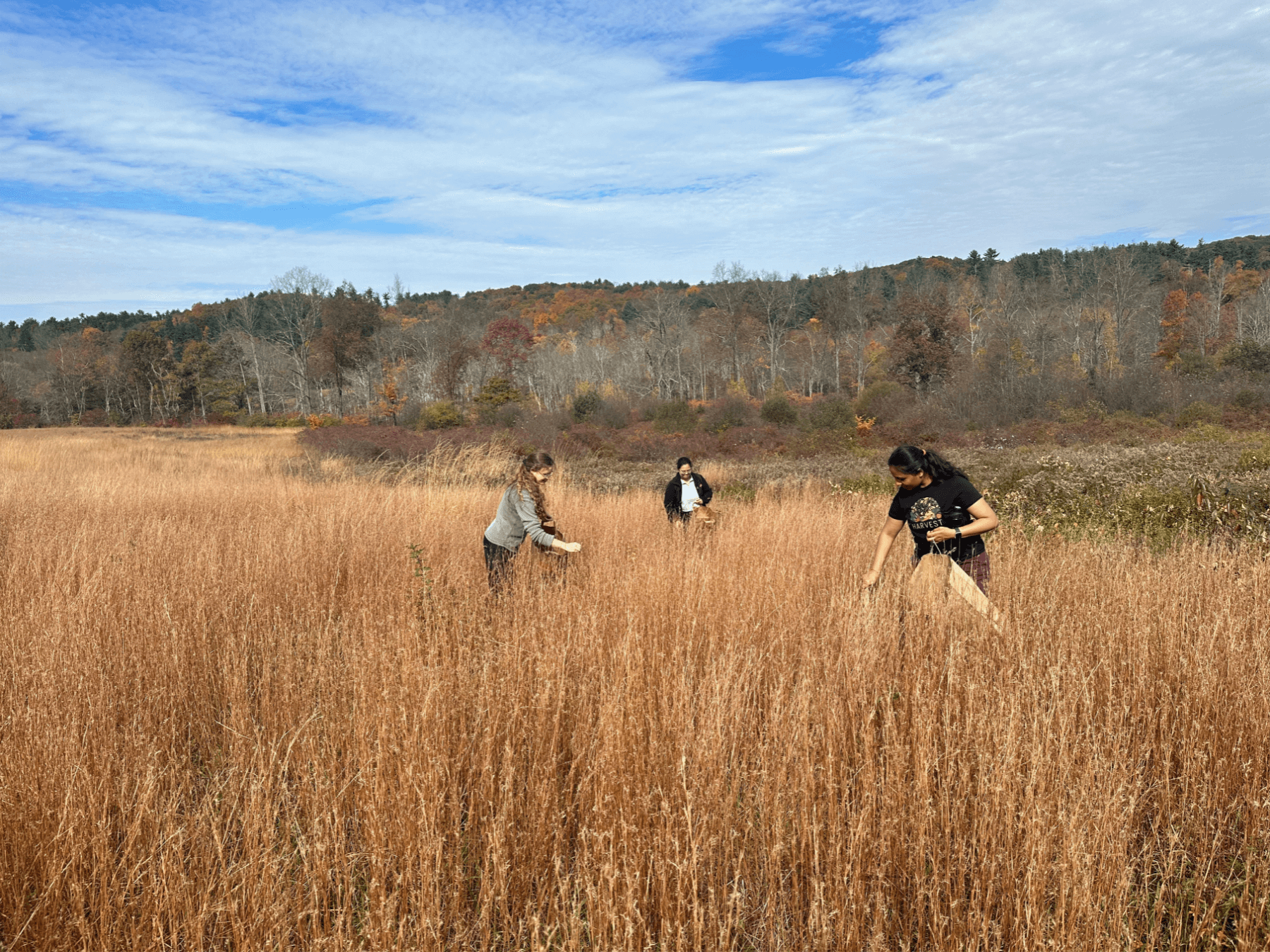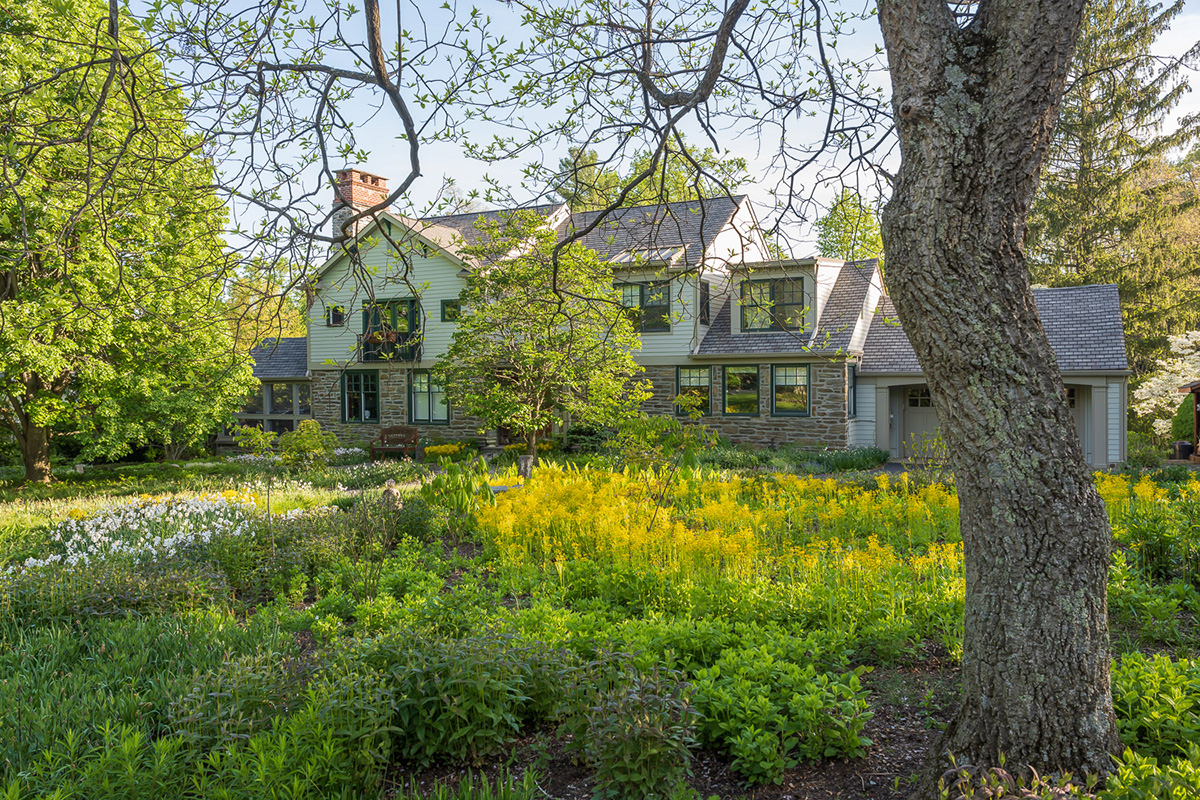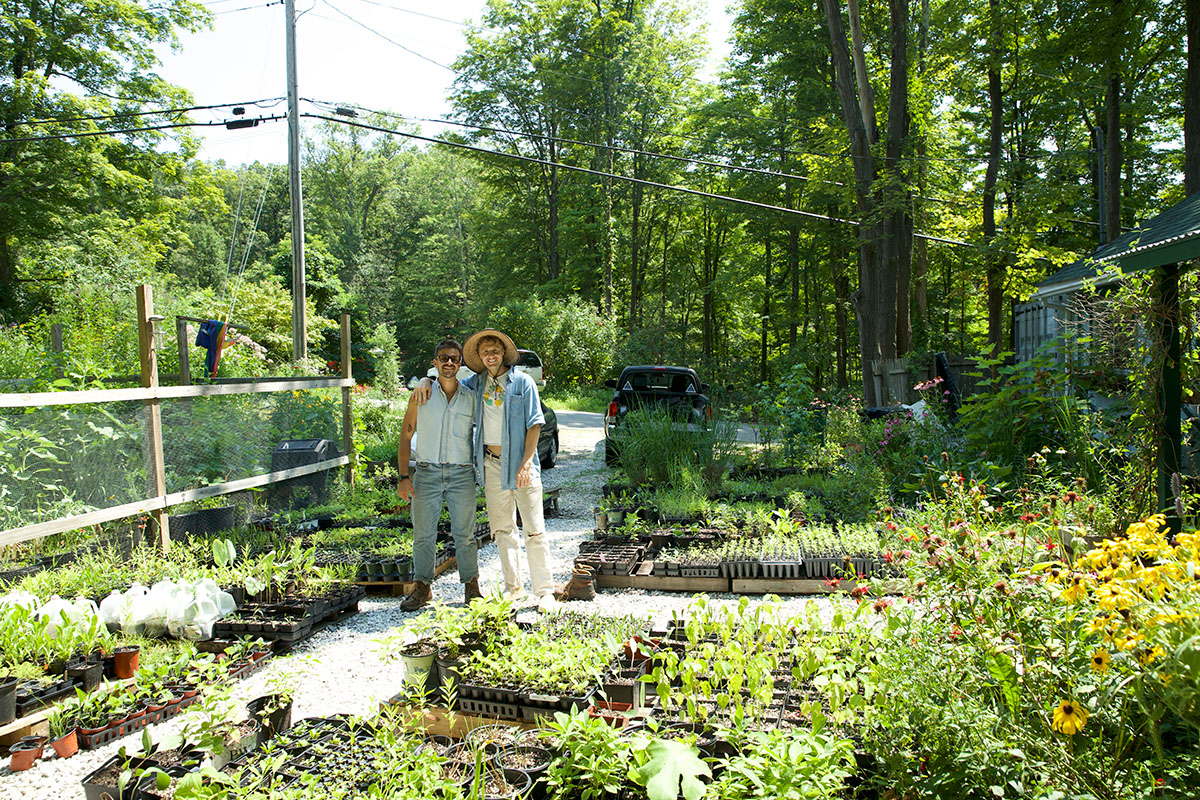
by Melissa Ozawa
Time for a bit of good news. More people are growing native plants. According to the National Gardening Association, the number of people buying them has nearly doubled since 2019. And while it can still be challenging to find native plants at garden centers around the country, small, hyper-local native plant nurseries are popping up to meet demand.
Below, we highlight six such nurseries (including three that opened just last year)—Earth Tones in Woodbury, CT; Flosagri in Cold Spring, NY; All Tomorrow’s Prairies in Tulsa, OK; Dropseed in Prince Edward County in Ontario; Redbud Native Plant Nursery in Media, PA; and Long Island Native Plant Initiative in Brentwood, NY—and asked them what lessons they’ve learned growing native plants.
Earth Tones Native Plant Nursery, Woodbury, CT
When landscape architect Lisa Turoczi was starting out as a designer, she had to travel hours to wholesale nurseries to buy plants for projects. At one nursery she had an epiphany: “I was standing among all these flowers and there was no sound, no buzzing, no birds,” she recalled. The eerie silence was a sign that they were spraying pesticides to keep insects away from the plants. No insects, no birds. That experience provided an impetus to start Earth Tones Native Plants in Woodbury, CT, with her husband Kyle, a wetlands ecologist, in 2004. What began as a small native plant nursery with 20 different species has grown today to offer 400 different species—all geared to their region in the Northeast. They grow everything from seed, including trees and shrubs, and are also propagating ferns by spore to allow for greater genetic diversity. “Plants grown from seed grow faster and are hardier and stronger,” says Turoczi. “They’re basically grown the way nature intended them, rather than forcing a plant to make roots out of its stem.” As for sound? There’s no eerie silence at Earth Tones. You can hear nature’s full chorus.
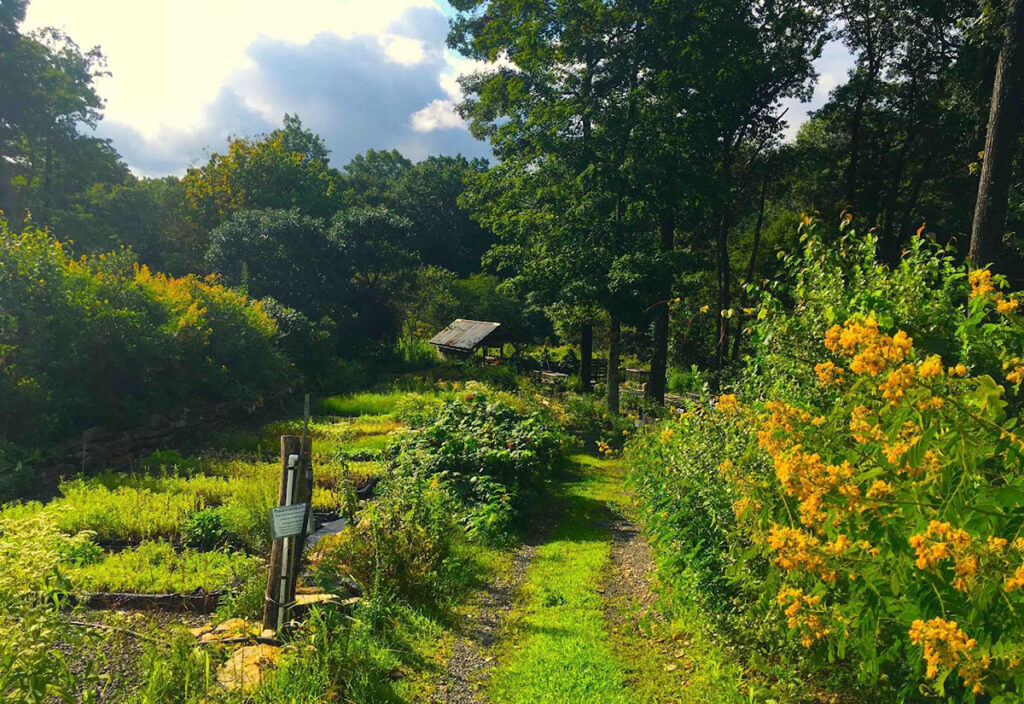
At Earth Tones, seedlings (plugs) grow in trays and next to it demonstration gardens. “We take inspiration from nature and think about all the different ecosystems and the plants and how that would all work together and look right in the space,” says Turoczi. Photograph courtesy of Earth Tones Native Plant Nursery.
Redbud Native Plant Nursery, Media, PA
“We are landscape architects who really love plants,” says Julie Snell, who, together with Lisa McDonald Hanes, founded the landscape architecture firm Tend in Media, PA, in 2013. They hadn’t set out to buy a nursery, but when Redbud Native Plant Nursery owner Catherine Smith was ready to retire five years ago, they jumped at the opportunity to take up the mantle and reconnect with the plants they love while still keeping their landscape architecture business. “When you’re working as a landscape architect, you can spend a lot of time at the computer,” says Snell. Having a nursery brings the duo back into the garden. They offer design and coaching services at Redbud, host workshops, and have display gardens so people can see, smell, and touch the plants. “We’re educators at heart,” Snell says. “We’re building community through horticulture.”
Landscape architects Snell and McDonald Hanes met at Pennsylvania Horticultural Society and took over Redbud Native Plant Nursery in 2020. Photograph courtesy Redbud Native Plant Nursery
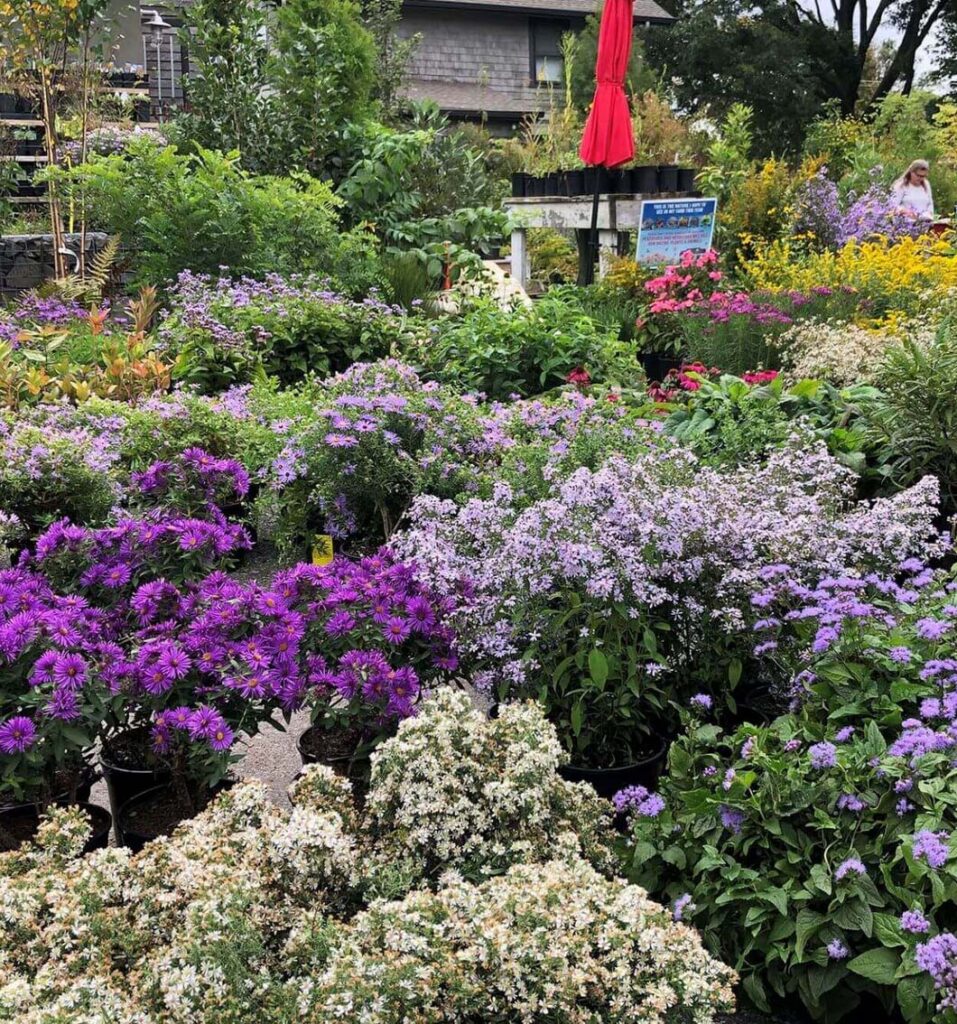
Long Island Native Plant Initiative, Brentwood, NY
“All of our plants originated on Long Island,” says Maggie Muzante, lead nursery manager at Long Island Native Plant Initiative (LINPI). The nonprofit grows more than 40 different ecotypic species, ethically collected from seed found in Nassau and Suffolk Counties. Its mission is to preserve the area’s biodiversity and to restore habitat. “We grow multiple sessions of the same species from multiple locations in the plot to boost genetic hardiness,” Muzante says. In addition to selling resilient, nursery-grown plants, they also add to the native seed bank and work mostly with a mighty group of passionate volunteers.
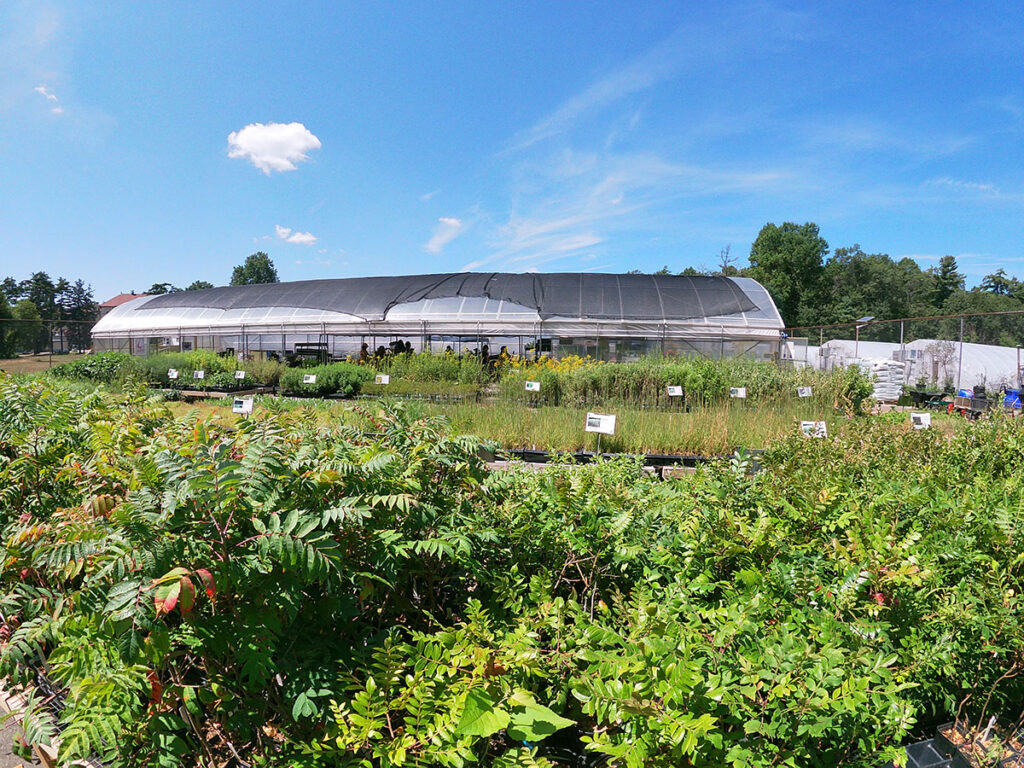
Part of the mission of the nonprofit Long Island Native Plant Initiative is to preserve Long Island’s biodiversity. They have several seed increase plots to increase the seed bank. Photograph courtesy of Long Island Native Plant Initiative.
All Tomorrow’s Prairies, Tulsa, OK
Not too long ago, Jordan Gee was working as a mail carrier in Tulsa. He would spend his days walking from “lawn to lawn” designing gardens in his head, when he finally decided to stop dreaming and “be part of the solution” by opening All Tomorrow’s Prairies in 2024. “Once you have perceived the human-caused damage to the landscape, it’s hard to unsee,” he says. “Owning a nursery is a great way to educate and inform people about how exciting and cool our native flora and fauna are,” he says. “Let’s surround ourselves with diversity of life and color, not bleakness, monoculture, and conformity.”
“The backyard native plant nursery movement is a beautifully subversive thing. All of us in Tulsa are friends and fellow nerds just trying to make a living with the space we already have, and it all comes from our passion and love of plants. It takes a lot of resourcefulness to make it happen, and it’s not easy, but It feels to me like it must have felt in the early 60’s West Coast garage rock scene. Have plants, Will travel. Because we are all small businesses, we are able to build close relationships with a lot of our customers. The energy and community excitement about native plants is palpable. A lot of these people are some of the most optimistic people I’ve ever met, because they see what a difference even a single plant can make,” says owner Gee. Photograph courtesy of All Tomorrow’s Prairies.
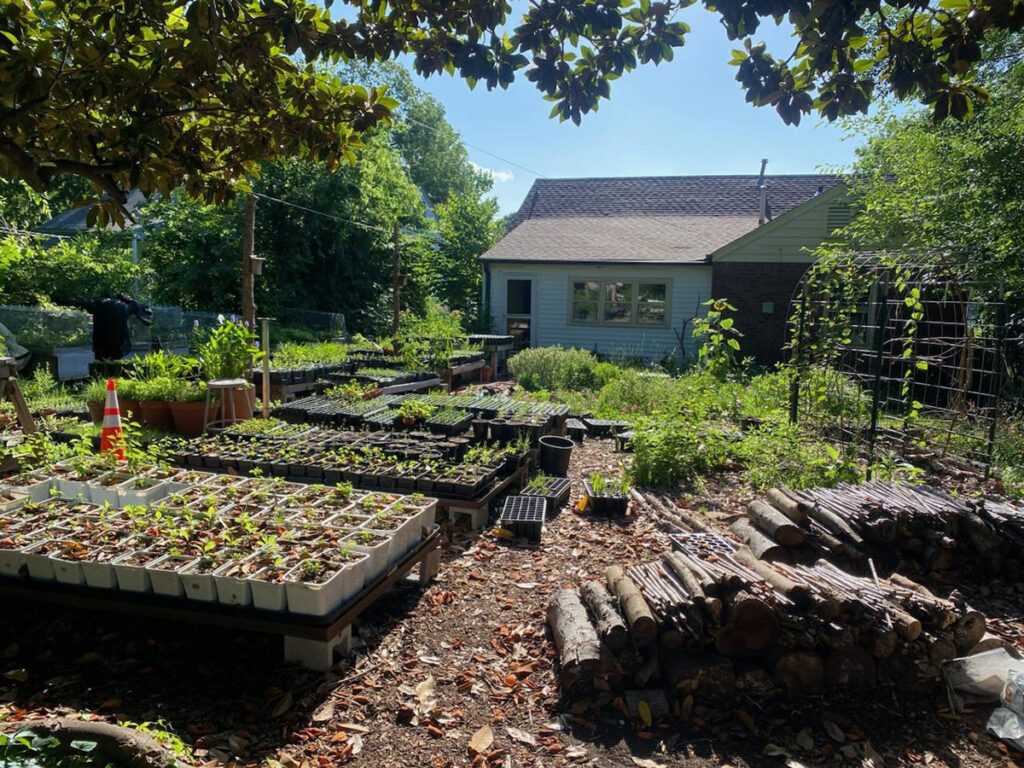
Flosagri, Cold Spring, NY
Logan Fisher had been working in horticulture for many years, training at Longwood Gardens, working in the U.K. at National Trust properties, in private gardens in New York City, and Governors Island. “But I never felt more connected to my work than when I started gardening with native plants,” he recalls. “It’s a direct way to have a positive impact in the face of so much uncertainty,” he says. Bolstered by a need to support local wildlife, he and his partner Austin Shupp, who had worked in marketing, opened their native plant nursery Flosagri last year in Cold Spring, NY, to provide affordable, native plants to their community. They grow ecotypic plants from seed and sell them at their local farmers markets, where they cherish the connections they make with their customers. “I feel like every time we sell a native plant, it restores and reconnects us,” says Shupp. “Even if it’s for one small square foot of space—to nature. It feels awesome to share that with people.”
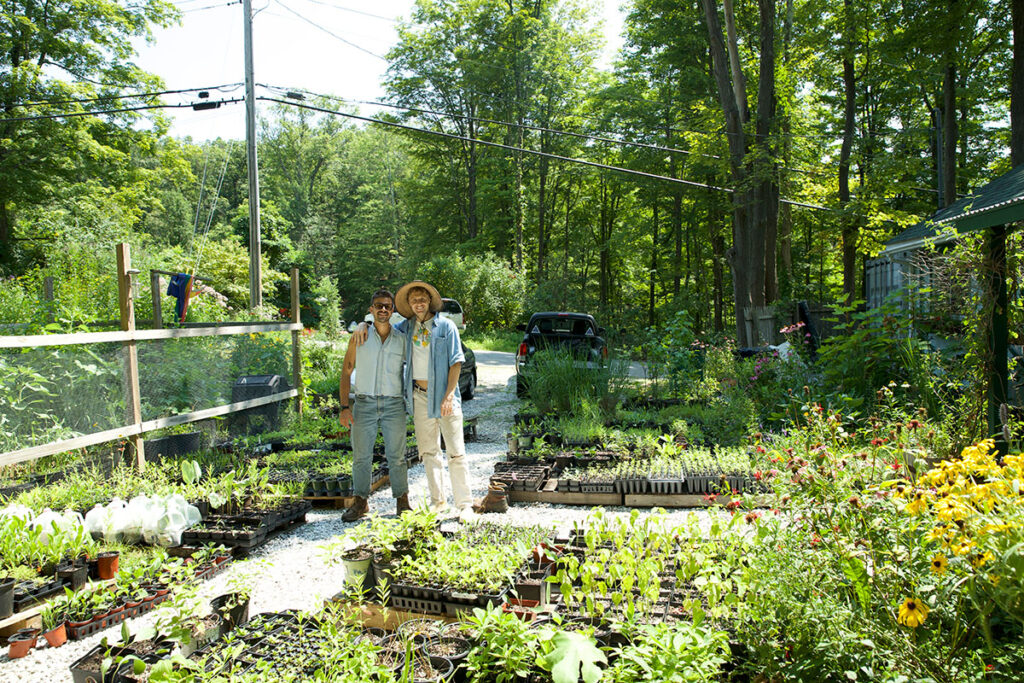
“A great part of selling at the farmers’ market is that you can connect with people who might not be there to buy plants,” says Flosagri’s Fisher, who also works as a field operations manager at Larry Weaner Landscape Associates. “We can talk to them, tell them what we’re doing, why we’re doing it and why it’s important.” Photograph courtesy of Flosagri.
Dropseed Native Plant Nursery, Prince Edward County, Ontario
Bailey Austin-Macmillan, a landscape designer at VTLA Studio, and her partner Riley Grund opened Dropseed Native Plant Nursery in Prince Edward County last May to fill a void in the area. “The ethical and ecological value of native plants spurred us on,” she says. “Our customers want to learn and we try to provide as many opportunities for them to learn as possible,” says Austin-Macmillan. They created demonstration gardens including a drought-tolerant meadow and a rain garden at an approachable, home scale. “We want people to find inspiration on what they can do by themselves at home,” she says. The nursery offers educational programs such as forest walks, a workshop called “Soil is Alive,” and a rammed earth retaining wall design session in an effort to figure out ways to transition from non-sustainable materials like concrete. “We’re trying to build a reciprocal relationship,” Austin-Macmillan says. “Not only with flora, fauna, and the earth, but with people too.”
“We value the symbiotic relationship native plants bring to the soil, fauna, and people,” says Dropseed cofounder Austin-Macmillan. They offer workshops and events at the nursery, including a workshop with Graham Cavalier to build a rammed earth retaining wall using a blend of centuries-old techniques and modern binders. Photograph courtesy of Dropseed Native Plant Nursery.

Lessons from Native Plant Nursery Owners
- Low maintenance does not mean no maintenance. Native plants need some attention when they’re first planted, says Turoczi. “A garden is managed. When you add a new native plant, you have to watch it, even baby it in the beginning, but then once it gets established, it’s fine.”
- Don’t panic when you see pests like aphids. None of the nurseries featured here will use pesticides. Instead, they let nature provide its own answer. “Even when we have years where the pipevine swallowtail caterpillars chomp down our entire stock, we gladly accept this fate. They’ll re-sprout later anyway,” says Gee. “Pesticides kind of defeat one of the main reasons we grow natives in the first place: to serve wildlife.”
- Allow for the natural order of things. When you do see something, “be patient,” says Turoczi. “Don’t spray it, step on it, kill it. Watch and see what happens.” Chances are another insect will come and take care of the “problem” or, as Gee says, the plant will recover just fine on its own. “One customer came back to us concerned that there were holes in the witch hazel leaves he had bought from us. He didn’t know what to do,” recalls Shupp of Flosagri. “We were able to tell him ‘Congratulations! This is a good thing! You’re playing an active role in the ecosystem.’ ”
- There’s no one way to use native plants. It’s not all just meadows. Grow them in pots, use them in more formal settings, have fun! And you don’t have to have a lot of space to grow native plants. “Plant them in whatever space you have,” says Snell, whose nursery is in a Philadelphia suburb and has customers coming from the city with small lots.
- Ask questions. The interest in native plants seems to be steadily increasing, says Gee. When you go to a native plant nursery, come with questions. Ask if plants are treated with pesticides and talk to the staff about what you’re looking for and what your growing conditions are. Think: right plant, right place. “Native plants are meant to be here,” says Austin-Macmillan. “They do so much better in people’s gardens than plants from other places.”
- Plant in the fall. “Most people wait to buy plants in spring because they think that’s when you need to plant them,” says Snell. “But fall is one of the best times to plant. It allows the plant’s roots to settle in and grow during the cooler season.”
This is part of a series with Gardenista, which ran on August 13, 2025.






